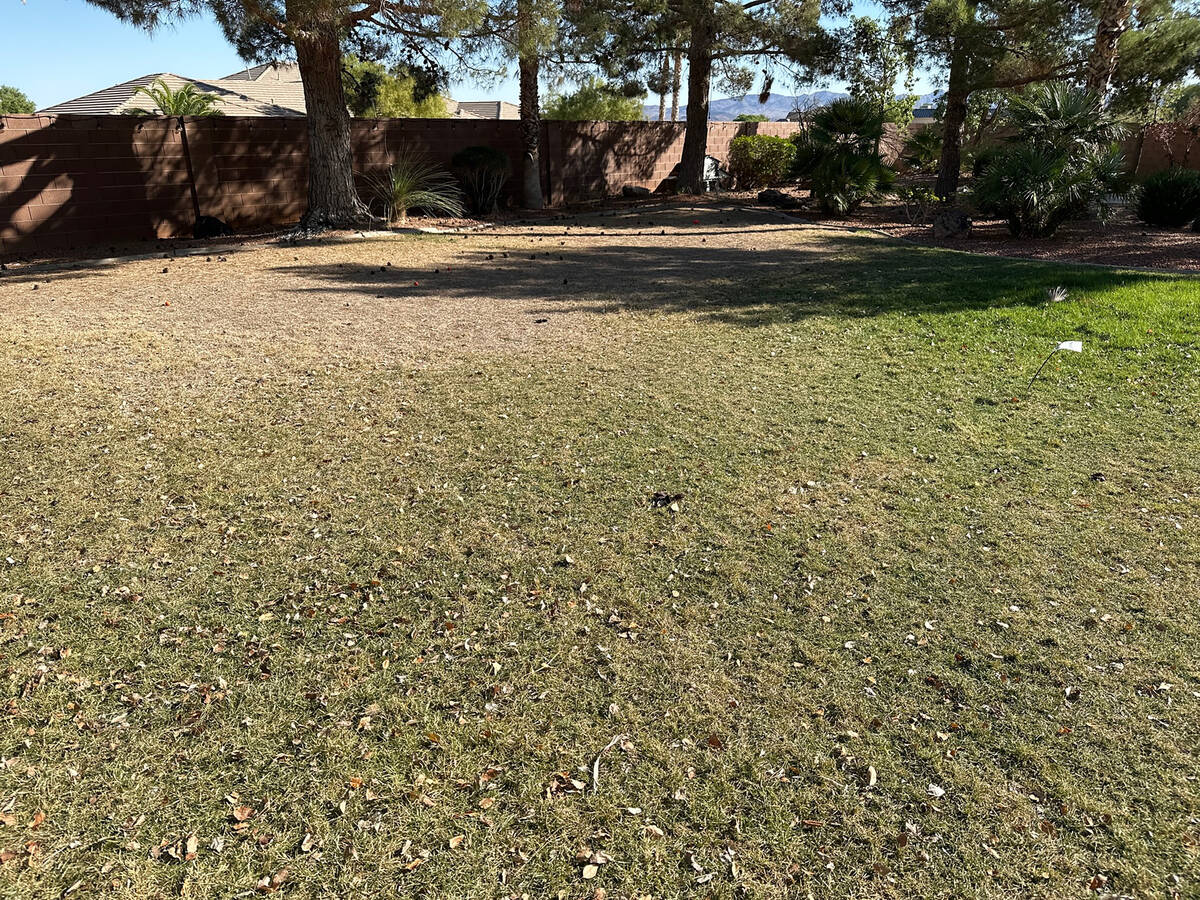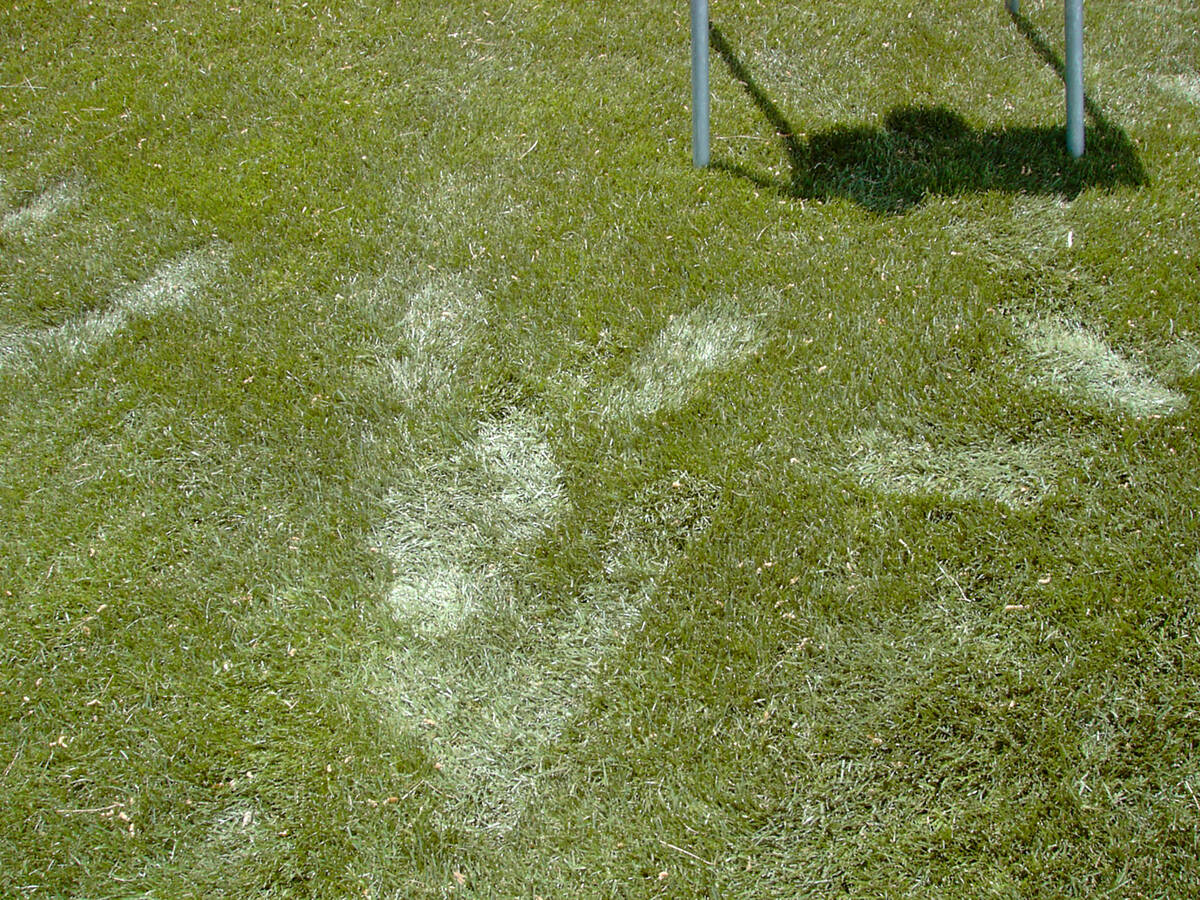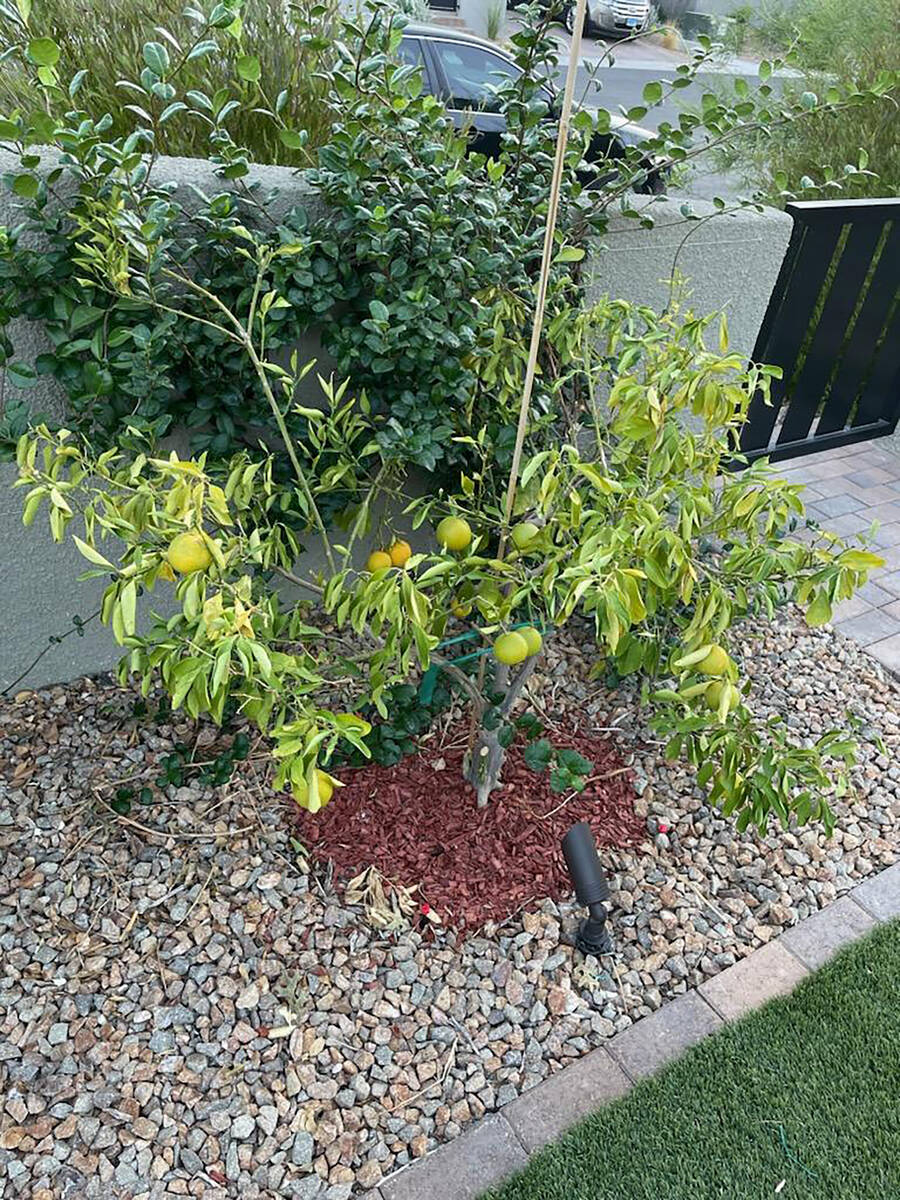Nevada Garden Clubs hosting free flower show
Nevada Garden Clubs is hosting a free flower show from noon to 4 p.m. Saturday and looking for possible entrants.
The flower show will be at the Nevada Garden Clubs Center, 800 Twin Lakes Drive, on the grounds of Lorenzi Park.
Ask the experts how to grow flowering plants in Southern Nevada. Contact Vicki Yuen to learn what is eligible for entry: yuenvicki@hotmail.com.
Q: My lawn is now large because we like it and can have it that way in my part of Henderson. It was green and lush when we moved in about a year and a half ago. The water was shut off at the street for a while and a mixture of irrigation systems has been put in. A friend and I did it because I was afraid it would be done wrong. Right now, it has a disease in it and am not sure it will come back. Do you make house calls?
A: I make house calls and I’m knowledgeable about lawns, grasses and disease problems. But I feel you must make some decisions first. If it were me, I would shrink the size of your lawn to what is needed. Next, pull out the curbing so that you can better visualize what is there. Remember, straight lines are easier to irrigate than the curved lines you have now.
Next decide on the grass you want. Over 90 percent of the lawns in the valley are tall fescue. Tall fescue, a year-round green but cool-season grass, uses 7 to 8 feet of water each year. In other words, tall fescue lawns use the most water of all the lawn grasses. It needs water every day in the summer.
Common Bermuda grass is considered by some a weed because of its informal appearance. But all Bermuda grasses are tough and need about 3 feet of water each year to look good. Bermuda grass does have a hitch. Because it is a warm-season grass, it becomes brown or dormant in late fall and winter. When it is overseeded for winter green, its water requirement climbs to about 5 feet per year, still less than a tall fescue lawn.
Green paints or dyes are available to make brown grass appear green for the winter months. Not watering so often in winter will save about 2 feet of water everywhere this warm-season grass is planted. If you decide on Bermuda grass, calculate that you will apply about 5 feet of water (with irrigation losses) each year it is planted. With a smaller area to irrigate, just about anyone can install the irrigation system.
As for the disease, a lawn fungicide application may still be needed if the disease is actively spreading. The humidity has been low enough recently that most diseases have stopped. But the grass should still be inspected by a professional. To help prevent lawn diseases in the future, core aerify it, apply a thin layer of compost on top of that and irrigate. After you’re finished, then apply a fungicide to the lawn to keep it from spreading.
Q: I had a new orange tree planted about two years ago in a spot facing south. I’m sick of trying to care for it. It’s starting to yellow and die. It’s surrounded by rocks. I fertilized this orange tree about one year ago and it’s been in the ground for about two years. Should I remove it or give it a chance?
A: It’s your decision. It’s recoverable, but I understand your disappointment. Orange trees, or any citrus for that matter, evolved in the warm climates of higher-rainfall areas of Asia. In those locations, citrus trees evolved in soils richer in organics. For that reason, citrus trees need higher organics than desert soils provide. It also does not care for the high exposure to light facing south. Full sun is not the same in Southeast Asia as it is in our desert climate.
That tree has multiple problems. First is its location. No fruit-bearing trees should be planted in full sun in the desert, facing south and surrounded by rock. It’s just too hot of a location. A better spot would be facing east or north or at least shaded by trees when that location gets too hot. Pick a fruit tree that casts shadows on itself from top to bottom. Don’t prune it for at least three years. Fruit trees like to have intermittent shade when standing alone.
Next are the organics (such as mixing in compost) in the soil. I don’t know how it was planted, but organics, mixed in the soil at the time of planting, last about three to five years before they need to be added again.
To add organics to its location, rake away the rocks and put a thin layer of compost about 3 feet wide. Keep compost 6 to 12 inches away from the trunk. Fruit trees can handle rock surface mulch if something is added to the soil that improves it, which allows the water to drain. Soil improvement with compost needs to be done about every three to four years. Put the rock back in place and water the tree so the area is wet. Keep it that way no more than two or three days.
If you end up replacing it, look for a plant that can handle that kind of intense sunlight and heat. Finding the right plant may be a problem. Desert or xeric plants make sense.
Q: I just installed tall fescue sod and watering at noon and 3 p.m. for about 10 minutes. The grass is staying moist but not soaked. Is this adequate while waiting for the sod to take root? What time of day do I want to water? The salespeople say watering during the day is all right but it’s best around dawn. Should I water the full amount at once or a few cycles separated by a certain time?
A: Your salespeople are correct. Watering should be done in the early morning because the wind is at its lowest speed.
Regardless of the time of year, watering newly planted sod should never exceed once a day. The sod acts as a mulch on top of the soil. Mulch slows the evaporation loss of water. Water newly planted sod just before the heat of the day. If the grass on top of the sod looks dry, spot water it with a hose. “Footprinting” will help you determine if the grass is dry. The grass does not spring back like it should if it’s full of water.
A: Applying fertilizer this time of year is counterintuitive. What you are doing is skipping the spring application of fertilizer. For fruit trees such as European pears, it’s OK to do that. For fruit trees like some citrus, you don’t want to stimulate or weaken growth this time of year.
Concerning the amount of fertilizer your trees require, the bag or package represents the maximum amount of fertilizer to be applied. If it calls for eight or nine tree spikes, then maybe four is adequate. You don’t know unless you look at how much growth occurred last year. Young trees should put on about 18 inches of new growth. With trees over the age of about 10 years, 8 inches of new growth is adequate. Nothing replaces looking at the trees and determining how much fertilizer to apply. Sometimes your trees may require half the amount listed on the bag; other times they may not need any if the previous year’s growth was excessive.
You used the wrong iron product for the fall. Iron must be sprayed on the leaves of the plant multiple times a week apart to green it up. Iron applications to the soil of any kind are effective only during the spring or very early summer months. Because it contains iron sulfate, Ironite is typically applied to the soil. That’s the hard science part. Ironite applications only work if the soil alkalinity is medium to low (6.8 and below). That’s hard to accomplish in the desert. This is why compost and other organics mixed in the soil and kept moist are very important when making iron applications.
If you want your pear trees to green up in the fall, spray iron on the leaves. A word of caution: Make it as easy as possible for the leaves to take up iron. Sometimes it works, and sometimes it is difficult, to get the iron inside the plant. Leaves don’t have roots. That’s why sprays must be applied a week apart, multiple times, for green-up to occur. It also helps if you add to the spray solution about 1 tablespoon of dishwashing liquid to a gallon of distilled water.
Bob Morris is a horticulture expert and professor emeritus of UNLV. Visit his blog at xtremehorticulture.blogspot.com. Send questions to Extremehort@aol.com.

































